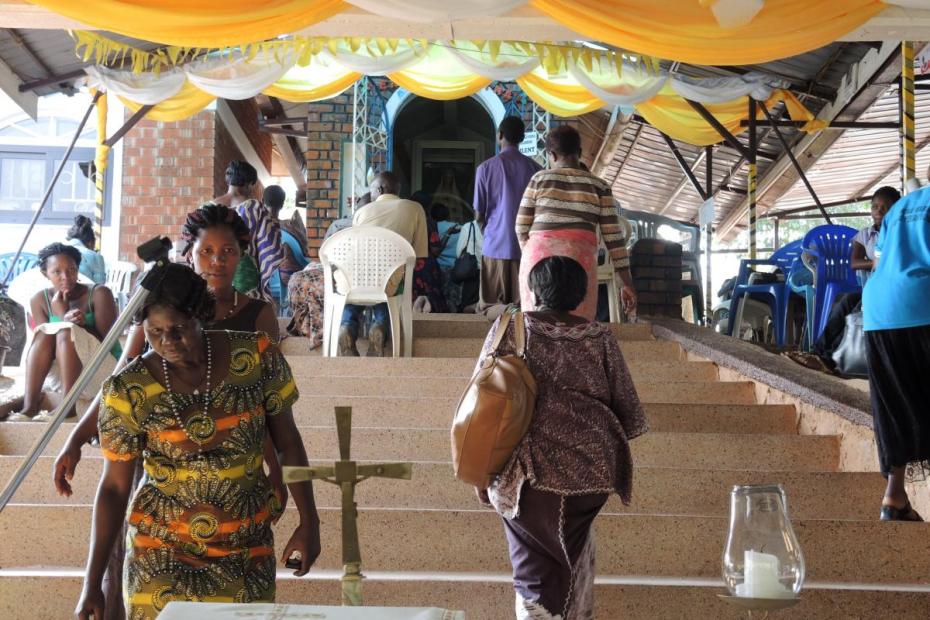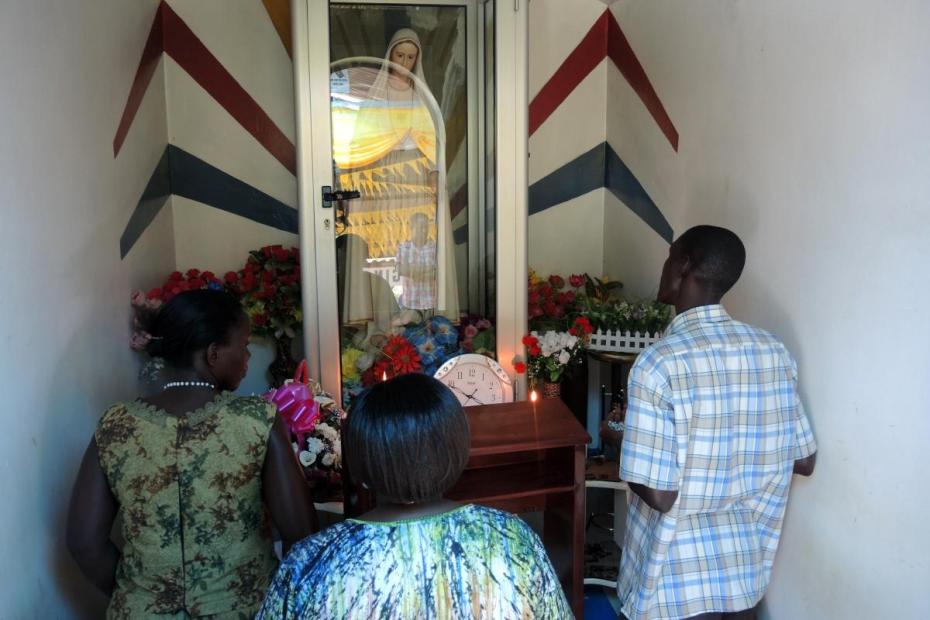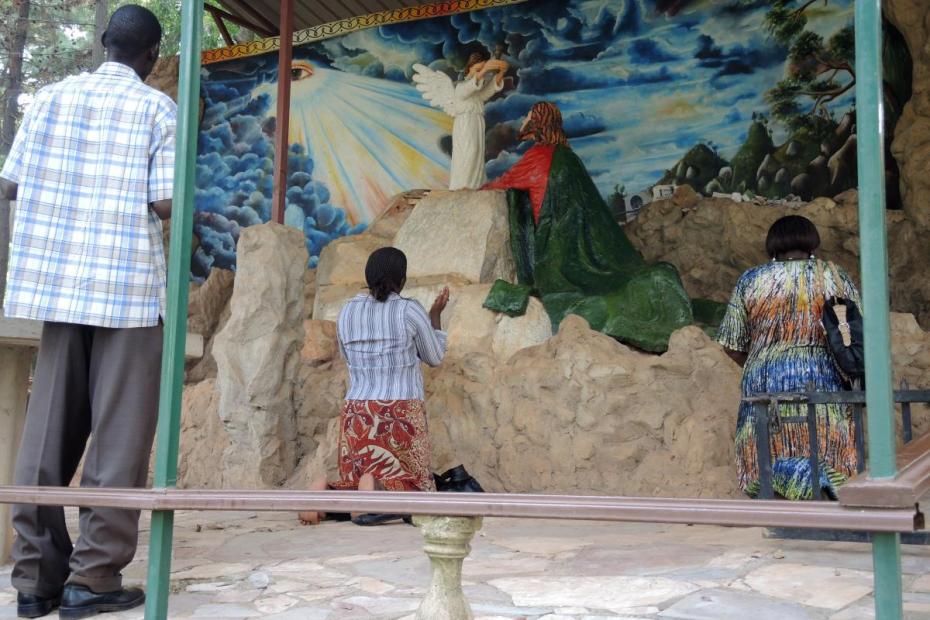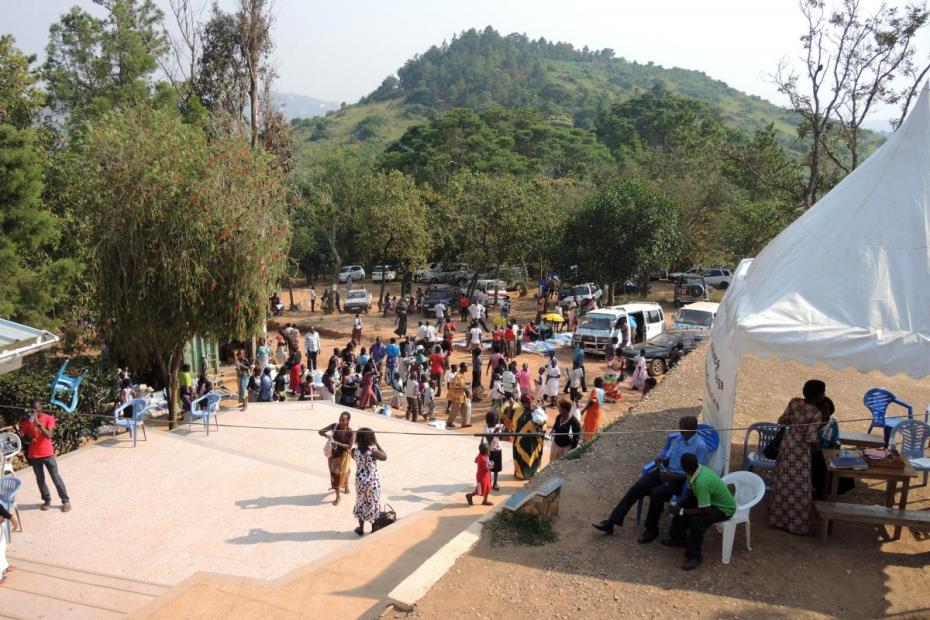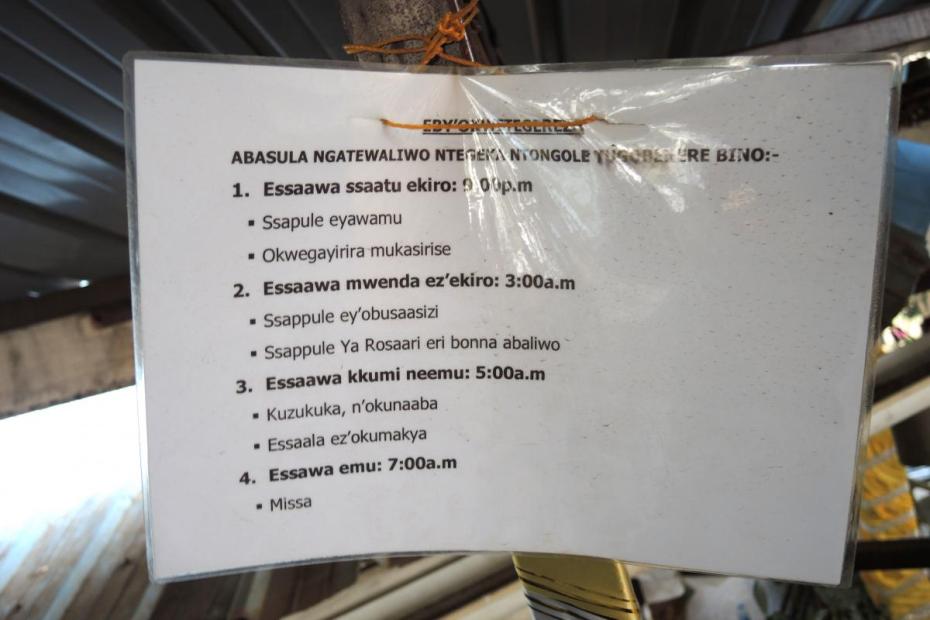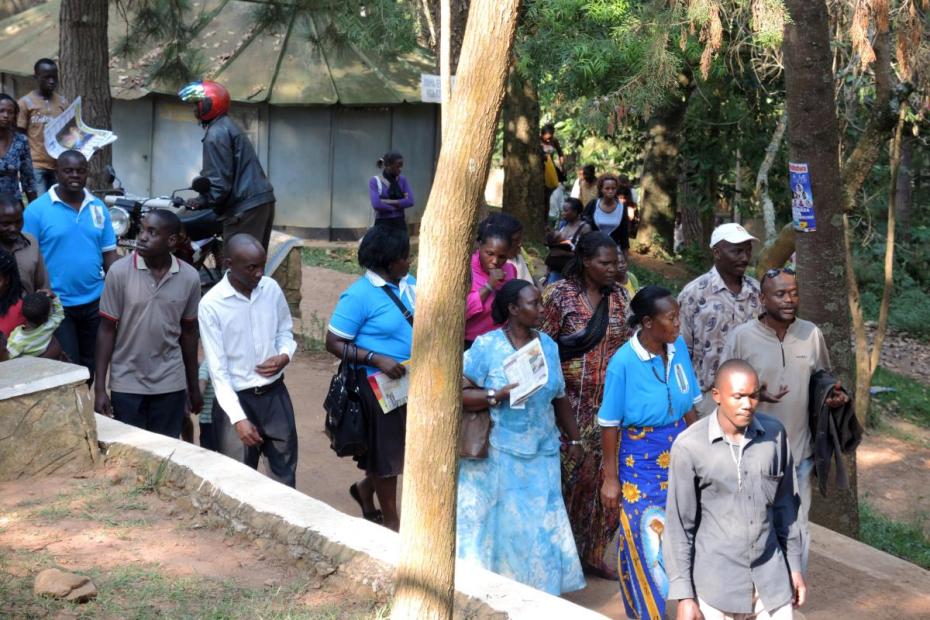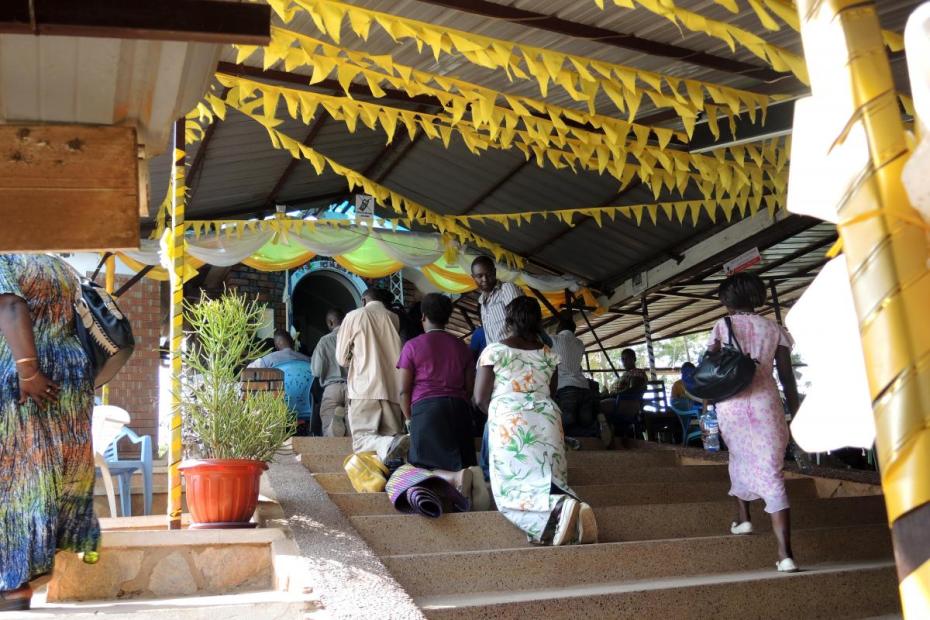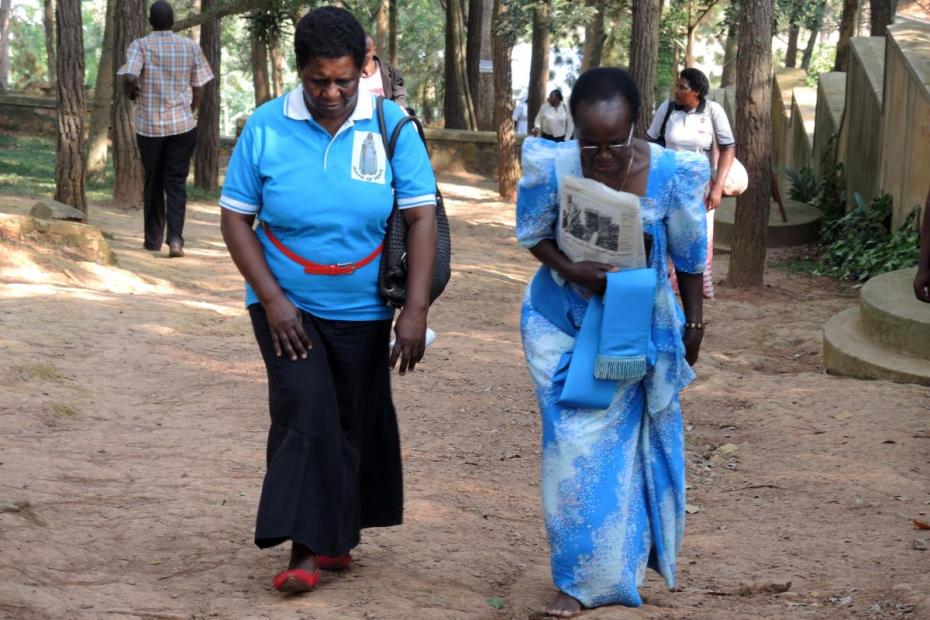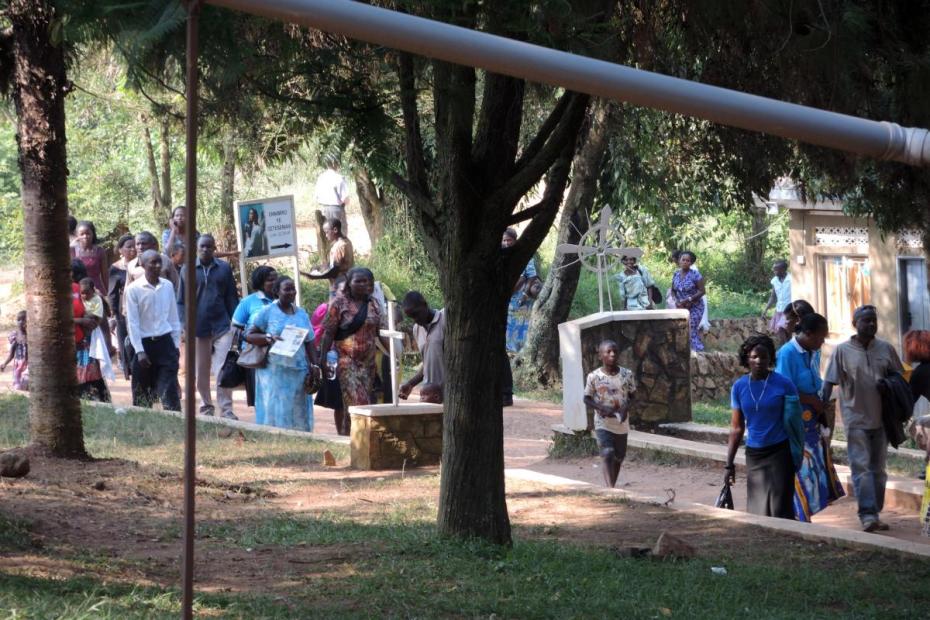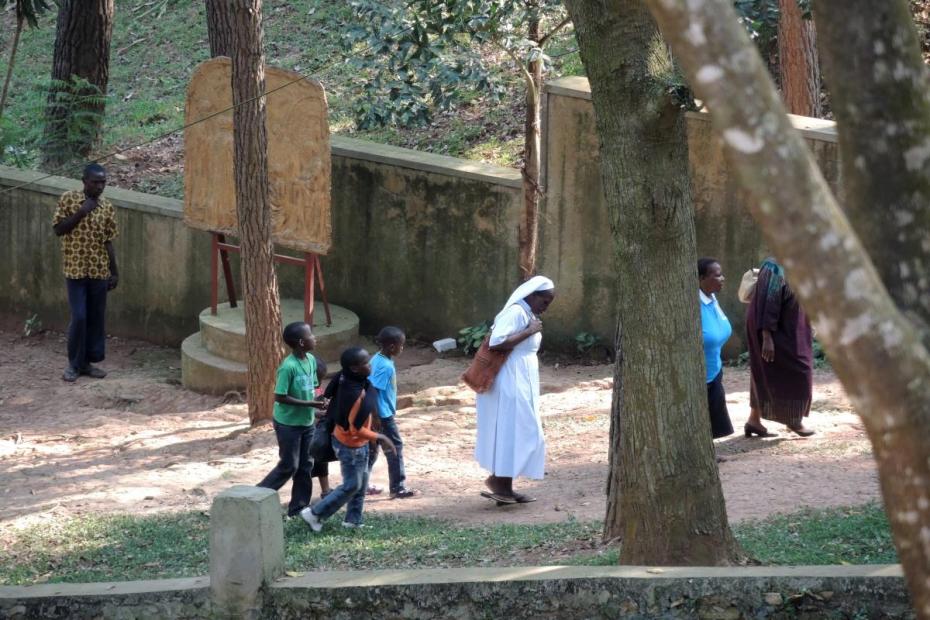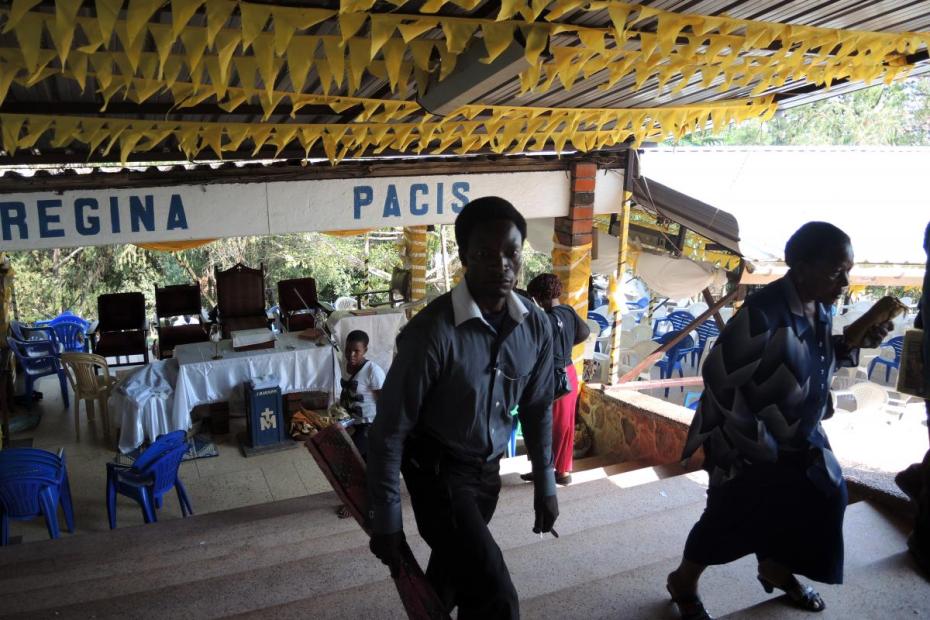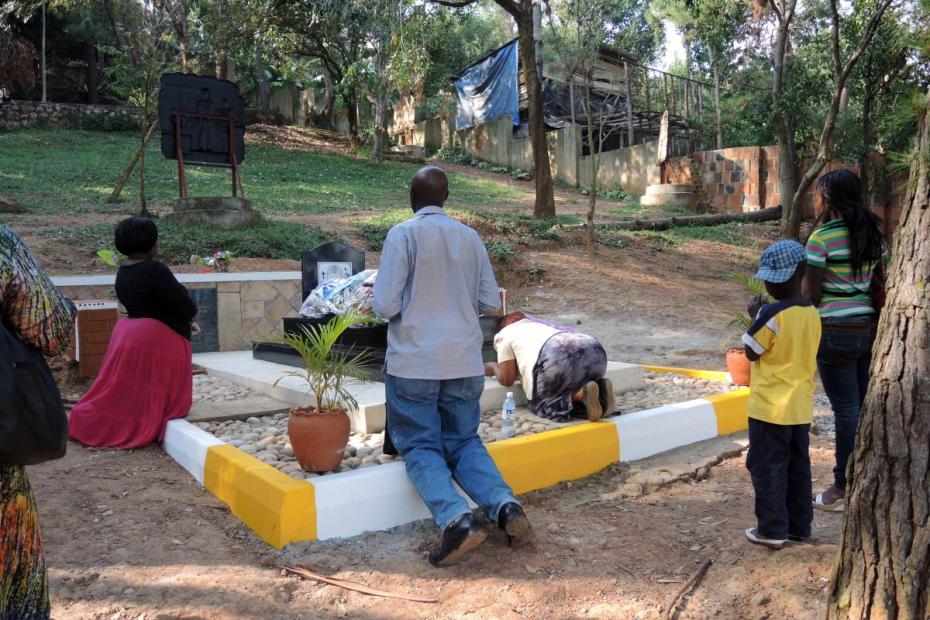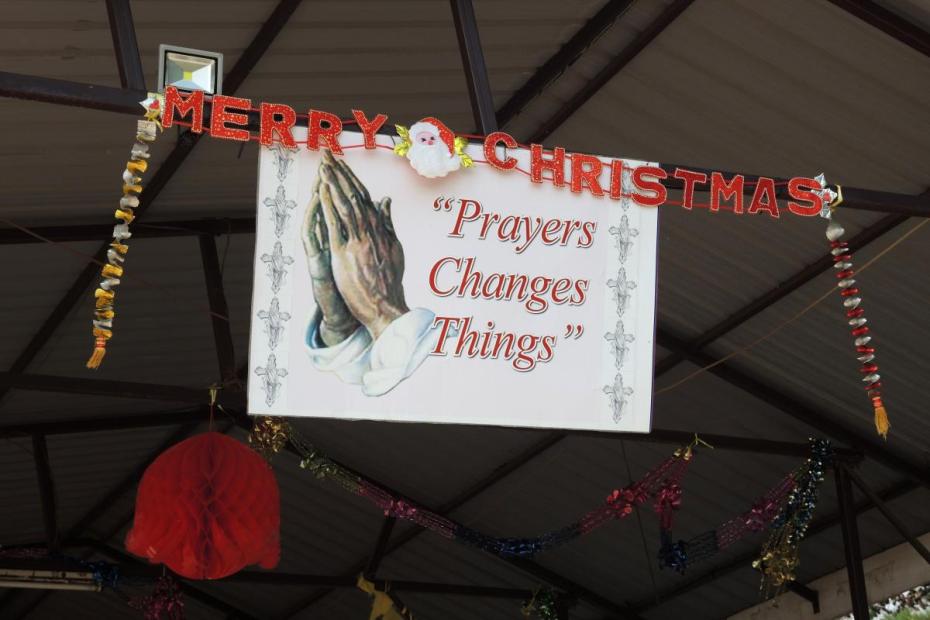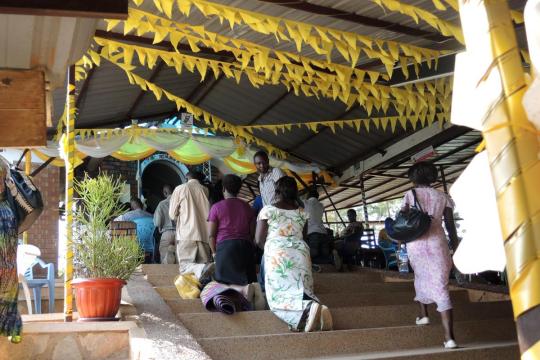Nestled among tea plantations outside Kampala, the hilltop shrine of Kiwamirembe had its roots as a site of prayer for peace during Uganda’s devastating civil wars, and was finally launched in 1989 as a place for spiritual refuge, healing, and thanksgiving for deliverance from the wars. Kiwamirembe means “giver of peace.”
A statue resembling Our Lady of Fatima stands behind glass in a small enclosure at the peak of the shrine, surrounded just below by an altar and by a sea of plastic chairs for Mass attendees. Next to it is a small brick building with a tabernacle, but the Marian shrine seems to be the focus of attention. The grounds below contain a variety of devotional sites related to Jesus’ suffering and passion, such as a diorama of Jesus in prayer at Gethsemane, Mount Calvary, stations of the cross, and even a simple version of the Scala Santa steps from Pilate’s palace.1
The shrine draws pilgrims throughout the year, for overnight vigils, daily Masses, and Good Friday Passion walks. While the themes and devotions at the shrine are all very traditional – European-style Marian images, rosaries, stations of the cross – with little designed to cultivate a visually African religious aesthetic, music at the liturgies includes a good deal of drumming, rhythm and movement.
For pilgrims to the overnight vigil, a sign offers the following schedule: 9 p.m. rosary then quiet prayer; 3 a.m. Divine Mercy rosary, then general rosary; 5 a.m. bathing, then morning prayer; 7 a.m. Mass and departure.
Two nearby areas on hilltops are said to also still serve under cover of darkness as African traditional shrines.
- 1Located in Rome across from the Basilica of St. John Lateran, the Scala Sancta is a set of 28 steps that were said to have been brought back from Pontius Pilate’s palace, and hence to be the steps Jesus climbed on his way to his condemnation. Pilgrims often climb these on their knees.
